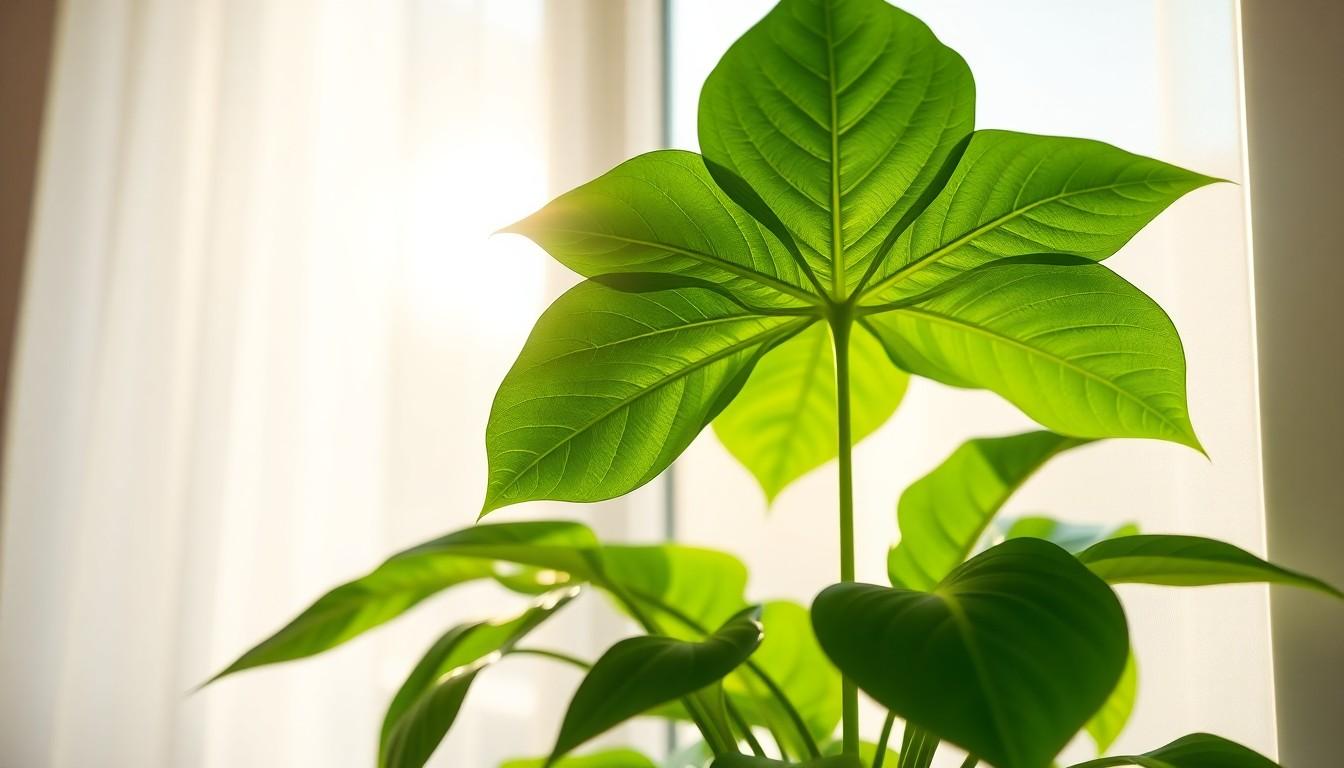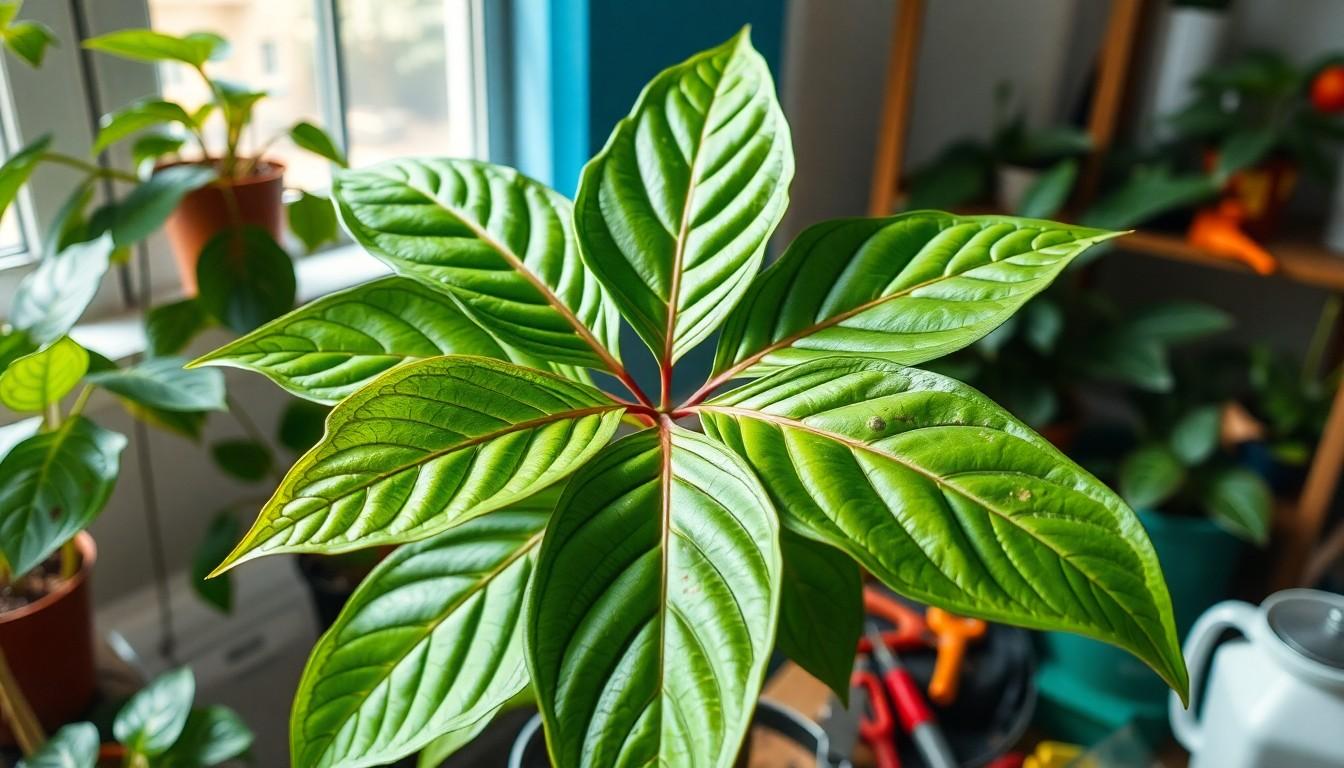The Best Fluffy Pancakes recipe you will fall in love with. Full of tips and tricks to help you make the best pancakes.

Umbrella Plant Diseases: Protect Your Greenery with These Essential Tips
Umbrella plants might seem like the perfect housemates—stylish, low-maintenance, and always ready to brighten up a room. But just like that one friend who shows up uninvited to every party, they can bring their fair share of problems. When it comes to umbrella plant diseases, things can take a turn faster than you can say “photosynthesis.”
Overview of Umbrella Plant Diseases
Umbrella plants face various diseases that can hinder their growth and appearance. Fungal infections often present as leaf spots or wilted foliage. Root rot, caused by overly wet conditions, leads to yellowing leaves and stunted growth. Bacterial blight results in dark edges on leaves, indicating a serious health issue.
Preventative measures help reduce disease occurrence. Ensure proper watering practices to avoid soggy soil conditions. Adequate air circulation and appropriate humidity levels also play a critical role in preventing fungal diseases.
Treatment options vary based on the specific disease. Fungicides are effective for fungal infections, while bacterial infections require a different approach, such as removing affected leaves. Quarantining new plants prevents the spread of potential diseases.
Regular inspections lead to early disease detection, which is essential for maintaining plant health. Identifying symptoms promptly minimizes the impact on the overall plant. Umbrella plants thrive best in well-draining soil and bright, indirect light, fostering optimal growing conditions.
Understanding these threats enables better care practices. Knowledge of common diseases enhances the ability to act swiftly, securing the longevity and vitality of umbrella plants. Each step toward prevention supports a healthy environment for plant growth.
Common Umbrella Plant Diseases

Umbrella plants encounter various diseases that threaten their health. Understanding these diseases can help in prompt identification and treatment.
Fungal Infections
Fungal infections commonly affect umbrella plants, leading to symptoms like leaf spots and mold. Save them with treatments that include fungicides. Overwatering fosters these infections, so it’s essential to adjust watering practices. Regularly inspect leaves for signs of fungus. Remove any infected foliage immediately to prevent spreading.
Bacterial Infections
Bacterial infections often manifest as soft, mushy spots on leaves. These issues typically arise from poor air circulation and high humidity. Removing affected leaves can help control the spread of bacteria. Ensuring proper watering techniques reduces the risk of bacterial blight. Regularly cleaning plant surfaces aids in preventing bacterial diseases continuing.
Viral Infections
Viral infections present unique challenges for umbrella plants. Symptoms include mottled leaves and stunted growth. Unfortunately, no cure exists for viral infections. Isolating infected plants is crucial in preventing the virus from spreading. Maintaining healthy growing conditions helps minimize the risk of viruses taking hold. Regular monitoring is key to catching any early signs.
Symptoms and Diagnosis
Recognizing symptoms of diseases in umbrella plants is essential for timely intervention and treatment. Common signs include leaf spots, mold growth, and stunted growth.
Identifying Symptoms
Leaf spots often indicate a fungal infection, resulting from excessive moisture. Yellowing leaves may signal root rot, which occurs due to poor drainage. In addition, bacteria can cause mushy spots on foliage, reflecting issues with air circulation. Mottled leaves typically denote viral infections, affecting overall plant vitality. Observing changes in leaf texture or growth patterns aids early recognition of distress signals.
Diagnostic Methods
Visual inspection serves as a primary diagnostic method for umbrella plant diseases. Checking for discoloration, wilting, or unusual growth provides immediate insight. Soil testing helps determine moisture levels and nutrient deficits. Furthermore, isolating affected plants limits disease spread. Consulting with local garden centers or plant pathologists offers additional guidance in identifying specific diseases. Utilizing these methods ensures proper diagnosis and effective treatment.
Prevention and Treatment
Preventing diseases in umbrella plants involves consistent care and attention. Implementing effective measures significantly reduces the risk of infection.
Preventative Measures
Apply proper watering techniques to avoid overwatering, a leading cause of root rot. Ensure adequate air circulation by spacing plants appropriately and removing any dead foliage. Maintaining appropriate humidity levels around 40 to 60% promotes healthy growth. Regularly inspect plants for early signs of disease, enabling prompt action if needed. Lastly, use well-draining soil to prevent excess moisture retention that fosters fungal infections.
Treatment Options
Treatment options depend on the type of disease present. For fungal infections, apply fungicides according to manufacturer guidelines. Removal of infected leaves helps prevent further spread. In cases of bacterial infections, immediately cut away affected areas, ensuring tools are disinfected after each use. Maintaining optimal conditions—like airflow and humidity—supports recovery. Unfortunately, viral infections have no cure, so isolation of infected plants prevents transmission to healthy specimens. Regular monitoring facilitates early detection, ensuring timely treatment intervention.
Conclusion
Maintaining the health of umbrella plants requires vigilance and proactive care. By recognizing the signs of disease early and implementing appropriate preventative measures, plant owners can significantly enhance their plants’ resilience. Proper watering techniques and ensuring adequate air circulation play crucial roles in disease prevention.
When faced with specific infections, swift action is essential for treatment. While some diseases can be managed effectively, others like viral infections necessitate isolation to protect healthy plants. With consistent attention and informed care practices, umbrella plants can thrive and continue to bring beauty to any space.
